Types and varieties of viola (violets)

Viola, pansies, Ivan da Marya - all these are the numerous names for garden violets. The rich color range and unpretentious care allows you to use it to create flower arrangements in gardens throughout Russia and Europe. Many flower growers argue that when cultivating viola in a personal plot, it allows you to harmonize relations in the family, to establish mutual understanding. Traditional healers also love violets for their antibacterial, antipyretic, immunostimulating effects. A decoction of the leaves and flowers of this plant is used for respiratory viral infections and allergic dermatitis.

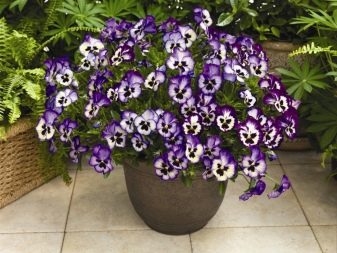
A bit of history
The history of the name of pansy is very interesting, in science it is known as a tricolor violet. Some researchers claim that this name comes from ancient Greece. The lord of Olympus, Zeus, turned onlookers gazing at bathing Aphrodite into beautiful flowers, which have since been called that. In Europe in the 18th century, the violet was also called "thought" or "thought". It is believed that this went due to the similarity of the replaceable capsules with the human skull, in which, as you know, thoughts are born.
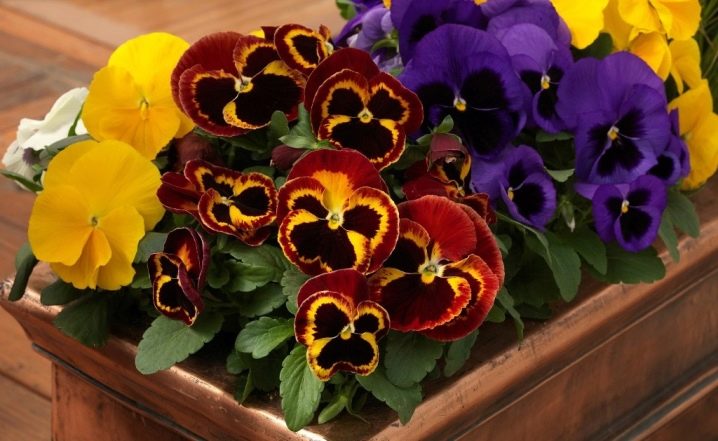
The history of selection is also very interesting. It has been ongoing since botanists discovered this plant. At first it happened in their homeland - North Africa. Then the breeding center moved to North America.
The very first flowers were lost, since botanists did not know the rules for caring for flowers, but over time, the knowledge of scientists expanded, which made it possible to breed new hybrids and varieties.
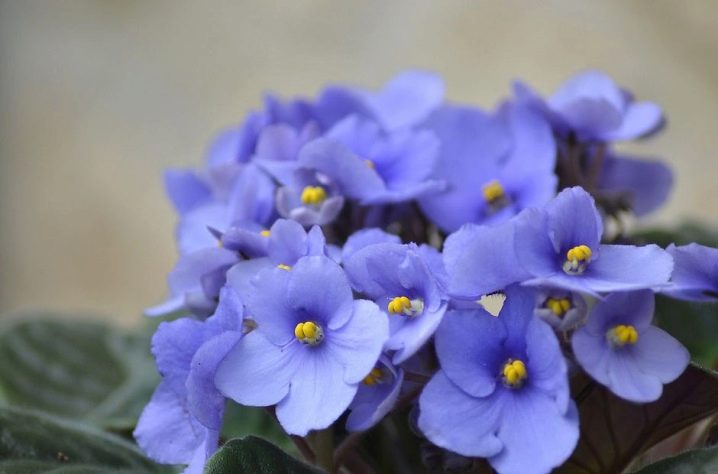
In the middle of the twentieth century, there was a breakthrough in the study of violets. Botanists have discovered a vegetative method of propagation, which made it possible to grow pansies much faster and maintain all varietal differences.
In 1939, the world's first terry violet was bred in Michigan. A year later, we got a plant with pure pink flower petals. And in 1941, the petals acquired a unique shape with corrugated edges and a white center, called "girl". In the 50s of the twentieth century, work on the introduction of new varieties continued. Were bred: fringed violet, pointed, with fringed edges. And the last big thing happened in 1990, when Nolan Blansit bred a variety with yellow flowers.
Today, botanists around the world know more than 500 species and more than 1000 varieties and hybrids of violets.
It is widespread and is used both in the interior of houses and apartments and in landscape design.
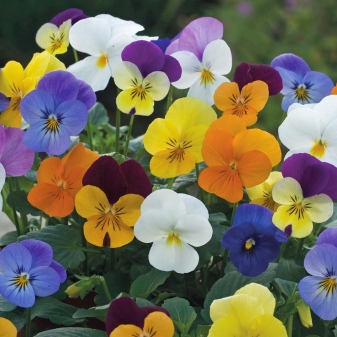
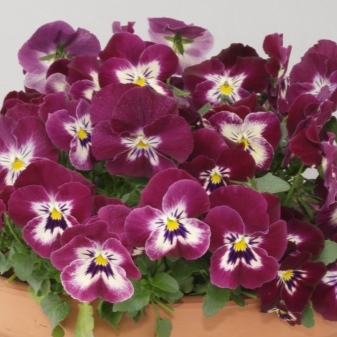
Popular varieties
Let's take a closer look at the description of some types of violets.
- Incised... It is listed in the Red Book of Russia. It got this name because of the unusual shape of the leaves, the edges of which seemed to be cut. Plant height does not exceed 20 cm. Flowers 1.5–2.5 cm in diameter, purple in color. Natural habitat - Eastern and Southern Siberia.
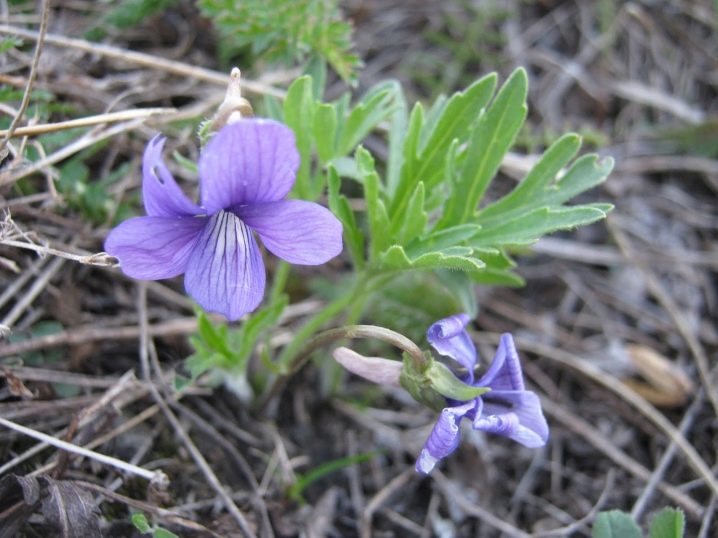
- Fragrant... This is the most common garden violet. Its wonderful scent spreads throughout the garden in the morning and evening hours. Leaves are simple, single flowers, dark purple or white. The beginning of flowering is April and May. Fragrant violet is a perennial plant, on the basis of which a large number of different varieties have been created: "Red Charm", "Tsar", "Triumph".
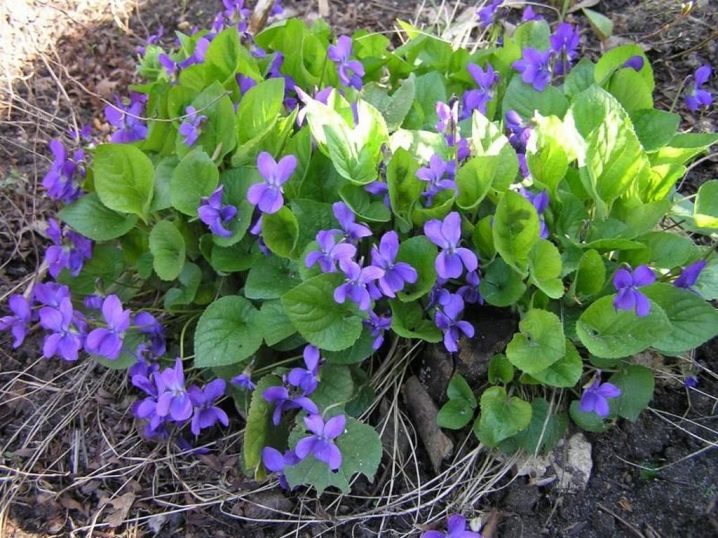
- Nursing... This is a perennial violet that produces self-seeding. Its flowers are blue-violet, 2.5 cm in diameter. A feature is the ability to quickly conquer space and ease of care.It is suitable for decorating large areas.
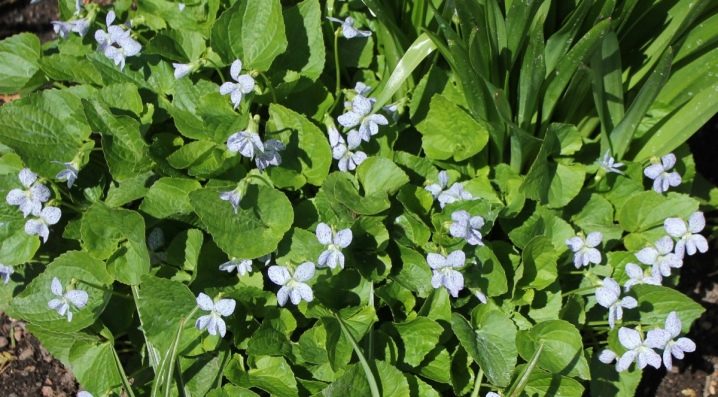
- Caucasian... It is a perennial viola with bright yellow flowers. It is widespread in the Caucasus, frost-resistant, unpretentious in care. The flower grows mainly in partial shade, does not tolerate flooding.

- Klobuchkovaya... Natural habitat - North America. The advantage of this species is the long flowering from April to November. Violet flowers are presented with a dark or white center.
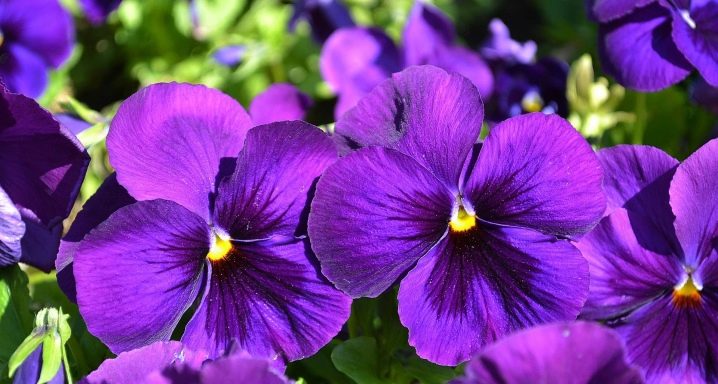
- Labrador... It is ubiquitous, frost-resistant, does not require careful maintenance, and grows well and quickly. Flowering begins in May in purple or purple.
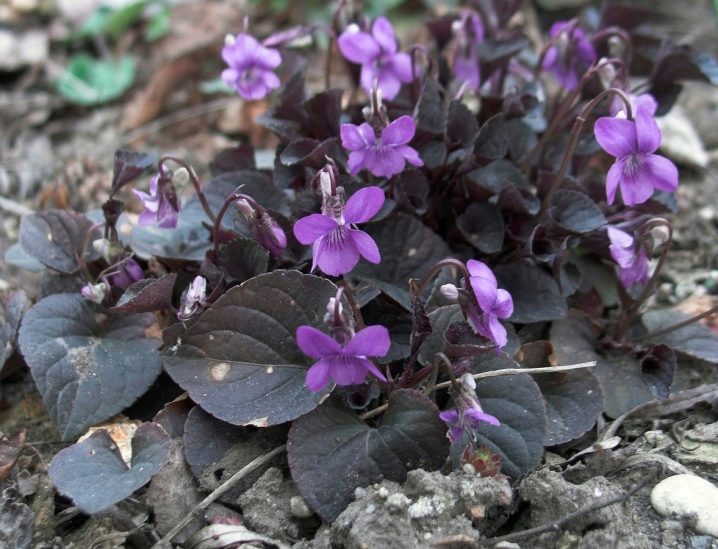
We have examined the species differences of violets found in their natural habitat. Let's now dwell on some varieties.
- "Swedish giants"... Due to the large flowers, up to 8 cm in diameter, this variety will receive this name. It has various colors with a dark spot in the center. The violet blooms for a long time and abundantly. It is very resistant to unfavorable conditions, frost-resistant, does not tolerate stagnant moisture. It is perfect for landscaping flower beds, personal plots, flowerpots.
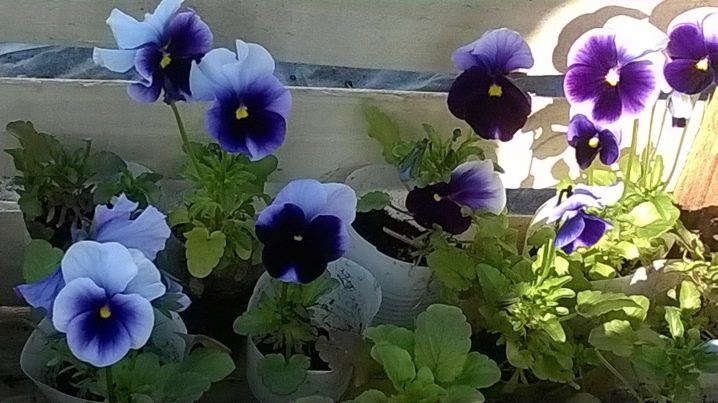
- "Terry lace". It is a biennial plant that blooms in its second year of life. In height - 20 cm, and the diameter of the flower is from 6 to 8 cm. Inflorescences are released from the beginning of May to mid-September, the color is purple with a golden spot in the center. This variety gets along well with other ornamental plants.
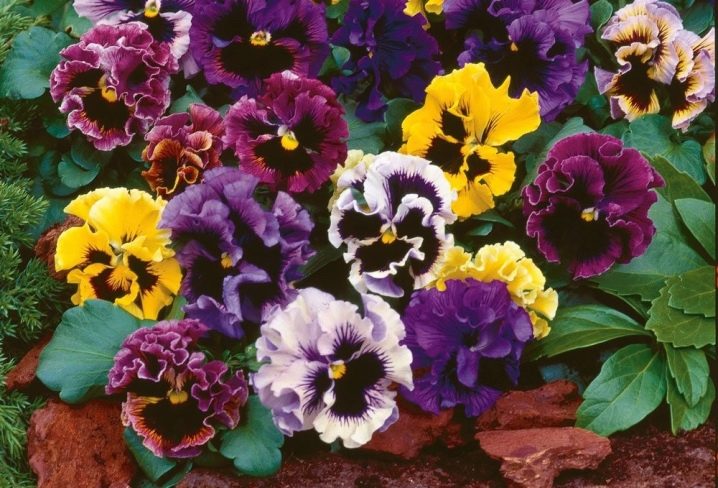
- Black Waterfall. Viola with black flowers and a small yellow eye has a diameter of up to 5 cm. It has leaves of a rich green hue, which are perfectly combined with dark flowers. It is resistant to frost, grows equally well in the sun and in partial shade. To obtain flowering in the year of planting, seeds are sown in February, then transplanted into open ground in April or May.
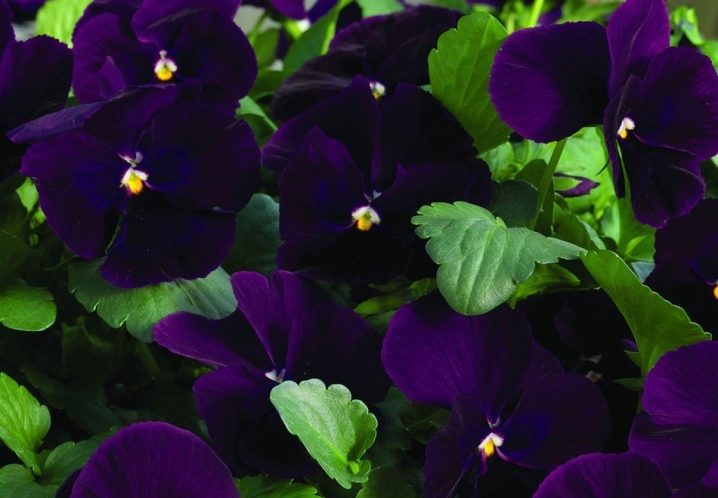
- "Vittroca Flamenco". It is a biennial plant native to Italy. Double flowers, of various colors with a yellow center, 5–7 cm in diameter. This variety blooms profusely from May to mid-September. This violet is resistant to unfavorable environmental factors, grows in partial shade, loves moisture.

- "Rococo". Its flowers are medium in size, up to 5 cm in diameter. The petals have a corrugated edge. The flower grows in lighted places, tolerates partial shade, frost-resistant. This variety is used to decorate alpine slides or small bouquets.
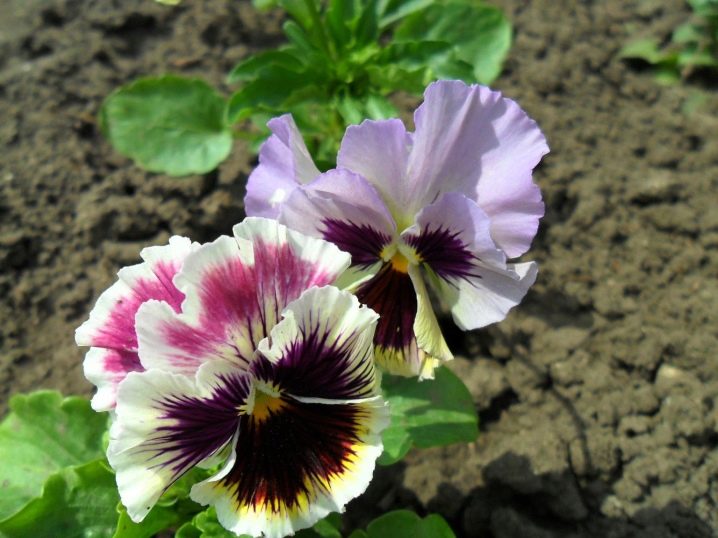
- "Tiger's Eye". This is an interesting hybrid that is used for planting in flowerpots and pots. Its flowers are very small, up to 3 cm in diameter, but have a unique color. Bright yellow petals are covered with a thin web of black stripes.
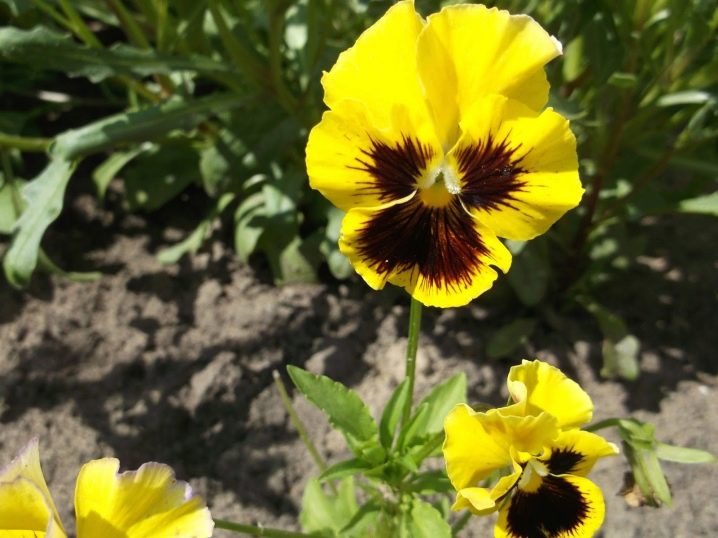
Viola garden practically does not get sick, is not affected by parasites. In the classical literature, cases of fungal infection are described, which modern fungicides perfectly cope with, for example, Alirin-B, Baktofit. Sometimes aphids settle on flowers. To deal with it, it is worth destroying the garden ants. Caterpillars are very dangerous, they eat the leaves of the plant, which leads to its death.
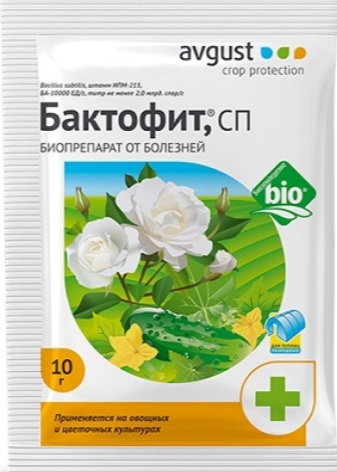
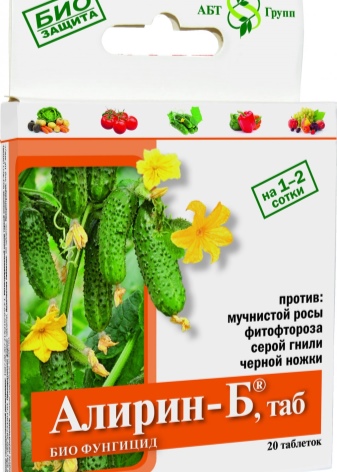
Color spectrum
The palette of viola shades is diverse - from white to black-violet. Therefore, the following specific terms have been developed around the world to allow the grower to quickly decide on the desired color:
- B (Blue) - blue or blue;
- C (Multicolor) - a color scheme;
- P (Pink or Rose) - pink;
- O (Orhid, Mauve, Levender) - orange, purple;
- R (Red, Mahagon, Plum, Burgundy) - cherry, red, plum;
- V (Violet or Purple) - purple or purple;
- W (White, Greamy, Blash) - white, cream, pinkish;
- X (Bicolor) - has two colors;
- Y (Yellow) - yellow.
Important! The color is combined in different ways. There are representatives of one color, two, as well as with many shades. And also on the flower there are often edges, frills, strokes and strokes that add variegation. Flowers with a tricolor are very interesting.
There are special viols called chimeras. This violet has two or three colors, as well as rays of a different shade that come out from the center of the flower. The peculiarity is that such a color cannot be repeated by ordinary cuttings. It is transmitted only when a stepson or peduncle is rooting. This is explained by the fact that such plants carry the chromosomes of several predecessors. However, there are exceptions - natural types of viols, which are colored like chimeras, but are not.
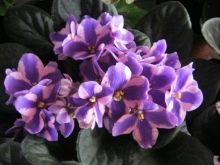
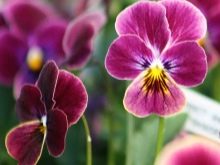
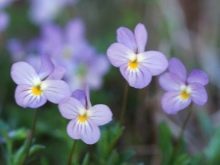
Beautiful examples in landscape design
For the decoration of personal plots, perennial varieties and types of violets are most often used. They give a picturesque look to any flower bed. To reveal all the decorative beauty of the viola, it is planted in massive groups or spots.
The larger the planting area, the brighter the unique aroma of flowers is heard and all the beauty is revealed.
In urban flower beds, violets are combined with the following plants:
- flowering shrubs;
- roses;
- tulips;
- daffodils;
- hyacinths;
- fern;
- host;
- coniferous shrubs.
Since the viola is a stunted plant, it is always placed in the foreground. The shade-loving violet is a salvation for shady gardens, therefore it is often used as a picturesque carpet. After all, few flowers that grow in a small amount of sunlight are capable of boasting such a lush color. Competently combined species and varieties allow you to continuously admire the blooming garden from early spring to late autumn.
Violets are perfect for decorating alpine slides, rocky gardens, the banks of an artificial reservoir. A good solution would be to place flowers in pots, which will allow you to decorate a garden with it in the summer, and transfer it to a balcony or into a house in winter. Violas in pots will decorate stairs, summer arbors and verandas.
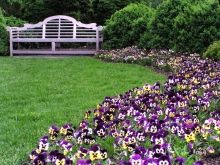


More information about viola in the next video.





































































































The comment was sent successfully.